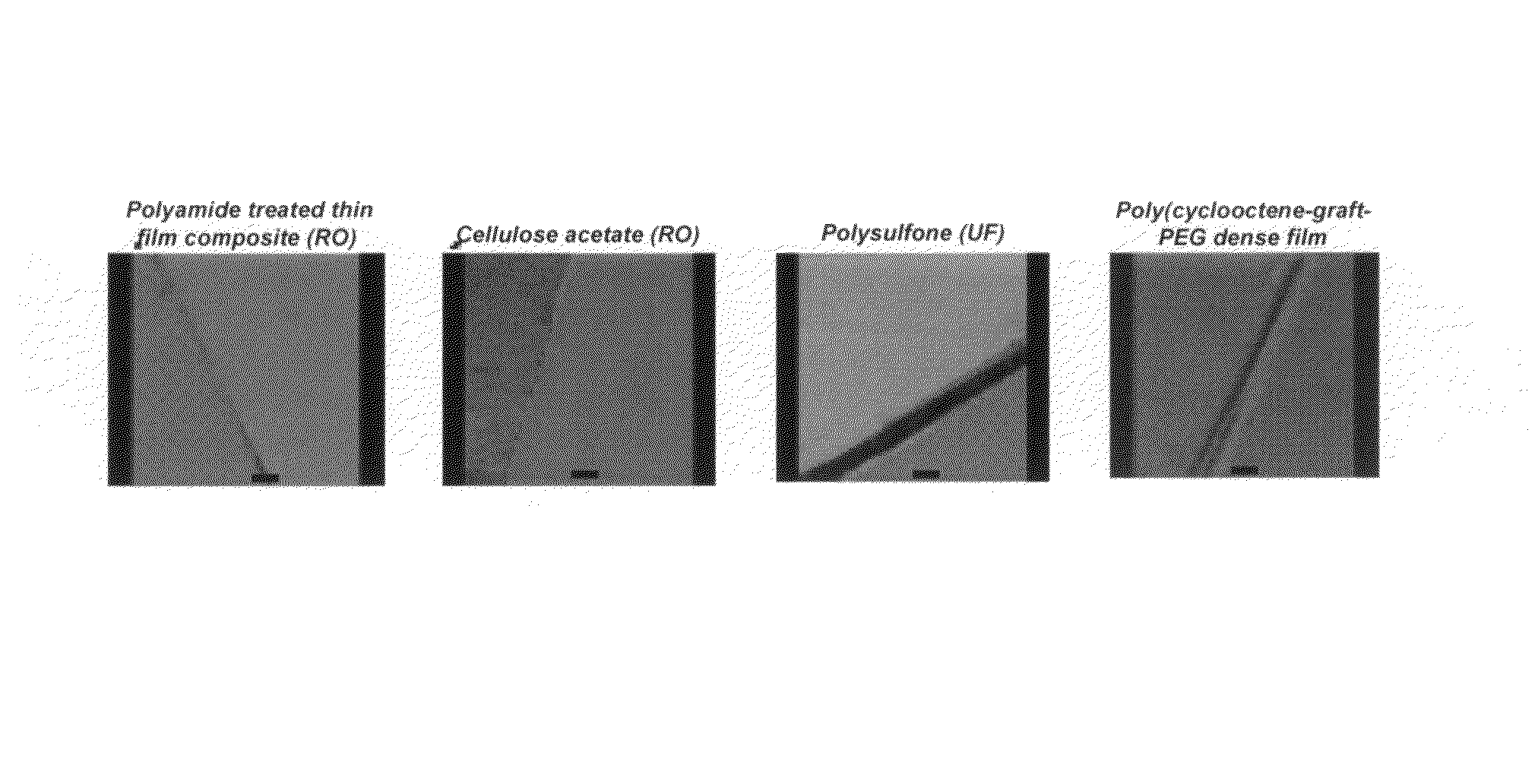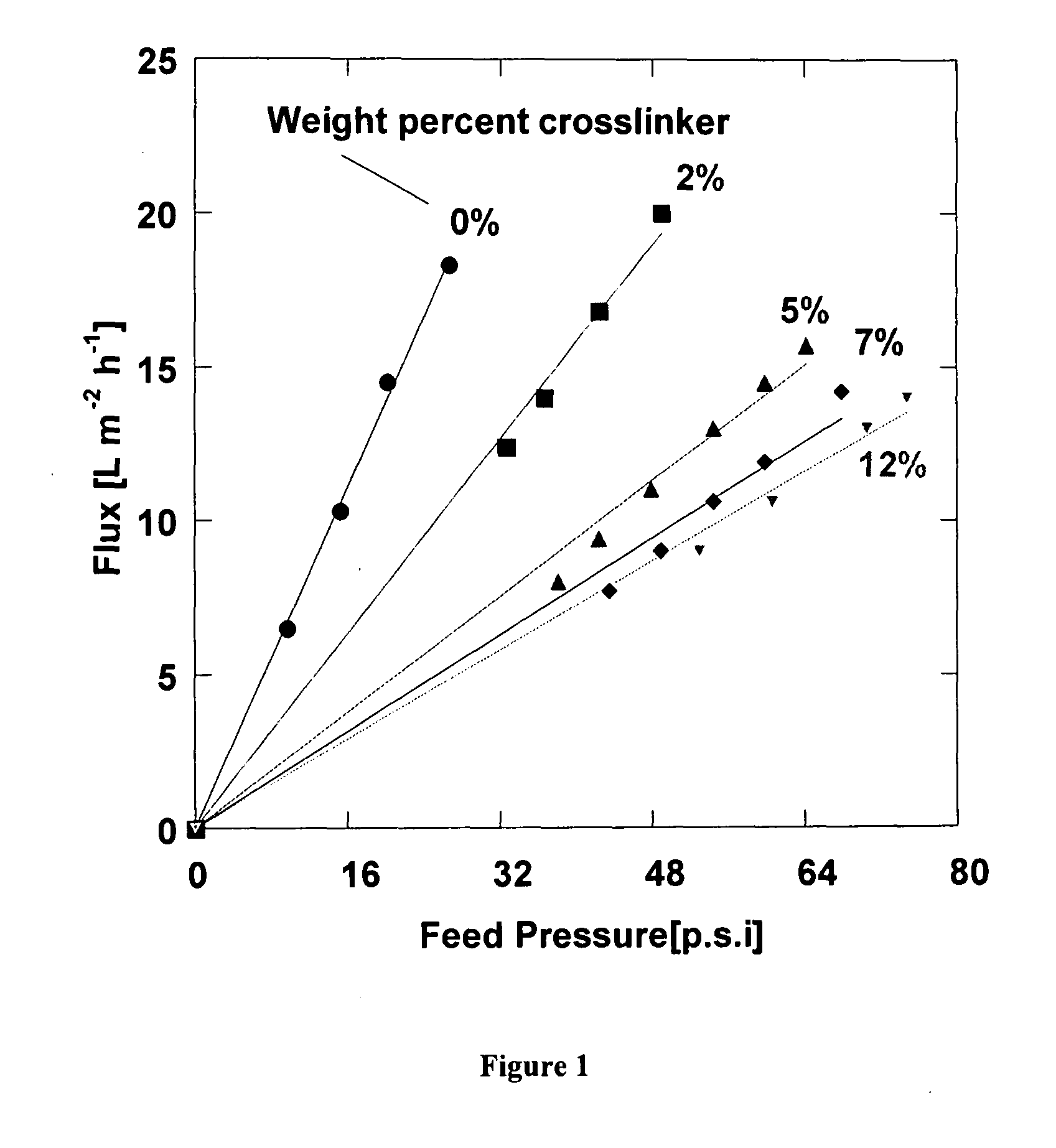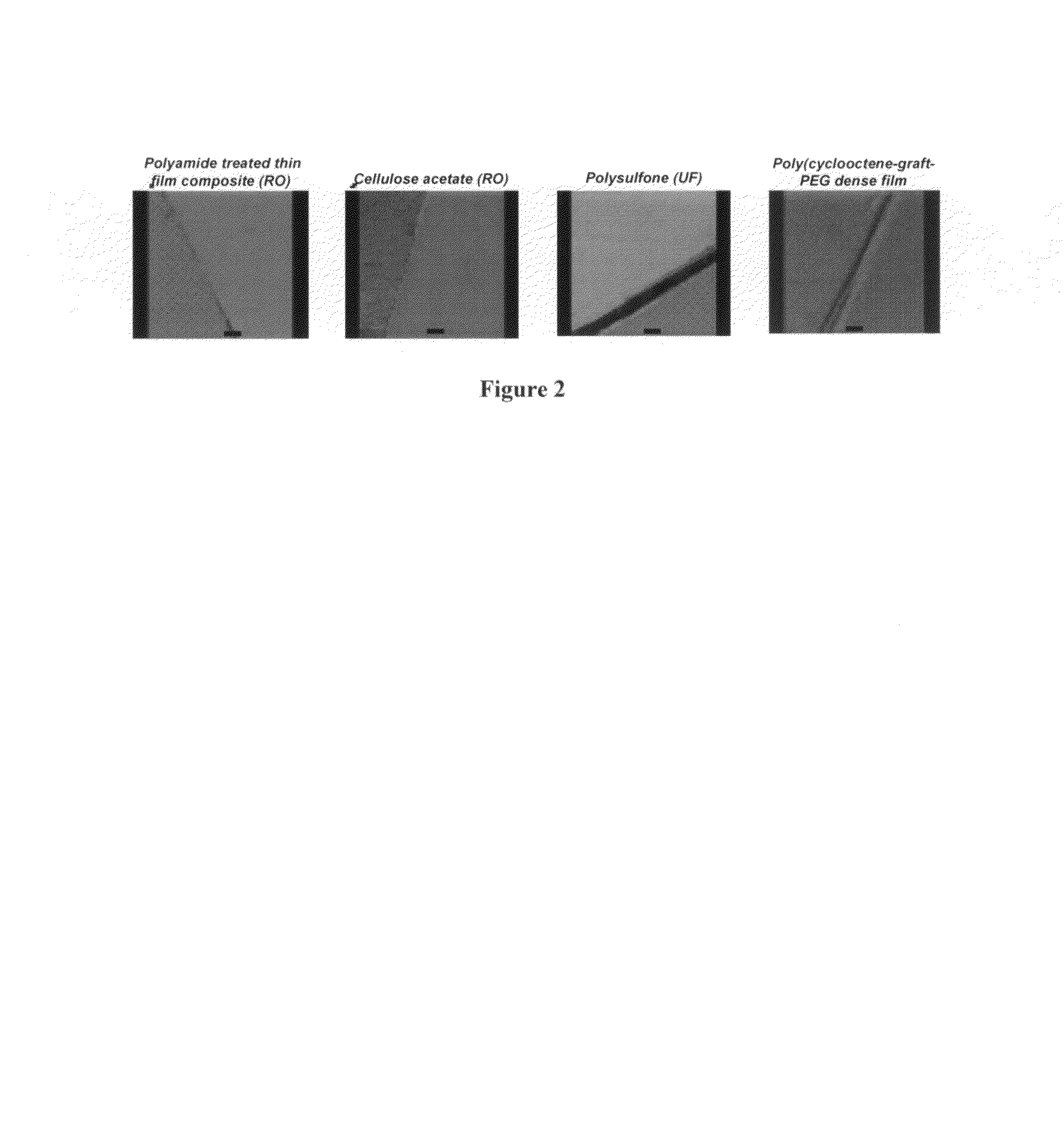Cyclooctene monomers and polymers, and water purification articles and methods utilizing them
a technology applied in the field of cyclooctene monomers and polymers, and water purification articles and methods utilizing them, can solve the problems of unsuitable robust membrane fabrication for aqueous applications, unsuitable for water purification applications, and selective loss, and achieve the effect of improving the resistance to fouling
- Summary
- Abstract
- Description
- Claims
- Application Information
AI Technical Summary
Benefits of technology
Problems solved by technology
Method used
Image
Examples
examples 1-3
[0058]These examples describe the preparation of PEGylated cyclooctene macromonomers. The PEGylated cyclooctene macromonomers were prepared in a three-step process, as illustrated in Scheme 3. In the first step, the alkoxide of 5-hydroxycyclooctene was formed by reaction with potassium napthalenide. In the second step, the alkoxide of 5-hydroxycyclooctene was used to initiate anionic polymerization of ethylene oxide. In the third step, water was added to terminate the anionic polymerization of ethylene oxide and yield the PEGylated cyclooctene macromonomer. The degree of polymerization of ethylene oxide was varied by changing the number of equivalents of ethylene oxide, m, to provide PEGylated cyclooctene macromonomers 7, 8, and 11 having the structure shown below where the number of ethylene oxide repeat units m was approximately 25, 50, and 100, respectively.
[0059]
[0060]A representative synthetic procedure is as follows. Into a flame dried air-free flask under N2 atmosphere was in...
example 4
[0061]This example describes the preparation of an azidoaryl-substituted cyclooctene by reaction of an acid chloride-substituted phenyl azide with 5-aminocyclooctene. The reactions are illustrated in Scheme 4. 4-Azidobenzoic acid was converted to the corresponding acid chloride (10) with thionyl chloride and triethylamine in dry tetrahydrofuran. An excess of 5-aminocyclooctene was then introduced to the solution of the acid chloride at 0° C. to form the azidoaryl-substituted cyclooctene, 4-azido-N-4-cycloocten-1-yl-benzamide (9), which was purified by recrystallization from diethyl ether / hexane in 73% yield. The product was characterized by proton and carbon-13 nuclear magnetic resonance spectroscopy (1H and 13C NMR), as well as Fourier Transform Infrared (FTIR) spectroscopy. Key features in the characterization of 4-azido-N-4-cycloocten-1-yl-benzamide included the presence of the amide carbonyl in the 13C NMR spectrum at 165.1 parts per million (ppm), and a characteristic azide sig...
examples 5-9
[0064]These examples describe the preparation of poly(cyclooctene-graft-polyethylene glycol) copolymers varying in the chain length and relative concentration of polyethylene glycol grafts. As illustrated in Scheme 5, five graft copolymers were prepared by ring-opening metathesis polymerization (ROMP) of the specified monomers / macromonomers in dichloromethane, using Grubbs' Generation II catalyst (tricyclohexylphosphine[1,3-bis(2,4,6-trimethylphenyl)-4,5-dihydroimidazol-2-ylidene][benzylidine]ruthenium(IV) dichloride; see, M. Scholl, S. Ding, C. W. Lee, R. H. Grubbs, Org. Lett. 1999, volume 1, page 953), with a 250:1 monomer-to-catalyst ratio, and 1-hexene as the chain transfer agent (50:1 molar ratio of monomer-to-chain transfer agent). The polymerization was terminated by addition of ethyl vinyl ether, and the polymer was isolated as a powder following precipitation into cold hexane. Gel permeation chromatography (GPC), using linear polystyrene standards and tetrahydrofuran as elu...
PUM
| Property | Measurement | Unit |
|---|---|---|
| weight percent | aaaaa | aaaaa |
| weight percent | aaaaa | aaaaa |
| pH | aaaaa | aaaaa |
Abstract
Description
Claims
Application Information
 Login to View More
Login to View More - R&D
- Intellectual Property
- Life Sciences
- Materials
- Tech Scout
- Unparalleled Data Quality
- Higher Quality Content
- 60% Fewer Hallucinations
Browse by: Latest US Patents, China's latest patents, Technical Efficacy Thesaurus, Application Domain, Technology Topic, Popular Technical Reports.
© 2025 PatSnap. All rights reserved.Legal|Privacy policy|Modern Slavery Act Transparency Statement|Sitemap|About US| Contact US: help@patsnap.com



